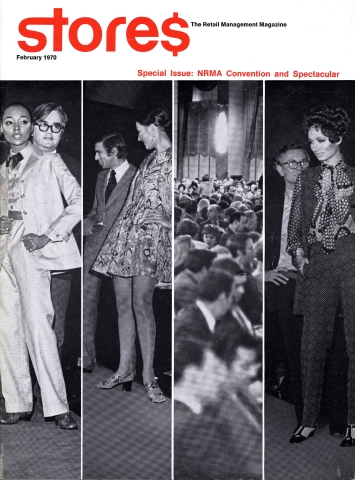Retail’s BIG Show: Still Going Strong After 105 Years

Attendees at the National Retail Dry Goods Association (NRDGA) Annual Meeting in January 1911 probably didn’t realize they were witnessing history in the making. But what started that year as a small event at a hotel in New York City during the annual buyers’ market has now become Retail’s BIG Show, one of the longest-running trade shows in the U.S.
The NRDGA chose January because that was when retailers flooded New York fresh from their cash-infused holiday season, ready to purchase apparel and merchandise for the coming year. But holding the event in the height of winter has sometimes presented challenges. By the 1980s, the event had grown to nearly 10,000 attendees and couldn’t fit into a single venue, so activities were split between the Sheraton New York and the Hilton hotels.
“Attendees left their coats behind, crossing 52nd Street – sometimes in deep snow and always in freezing cold weather – between educational sessions and meetings to review products and services ranging from hangers to shopping bags and cash registers.” said Susan Newman, senior vice president of Conferences and Marketing for the National Retail Federation ((NRF), producer of the BIG Show.
In 1958, the NRDGA merged with another organization to become the National Retail Merchants Association (NRMA). In 1990, the NRMA merged with the American Retail Federation and the National Retail Federation was born. The NRF is now the world's largest retail trade association.
By the 1990s, technology vendors were clamoring for exhibit space, pushing out many of the traditional products. The Hilton was bursting at the seams with exhibits covering ballrooms on four floors, in addition to the hallways. Educational sessions were still being held across the street at the Sheraton. To accommodate the growing number of attendees and exhibitors, the show moved to the Jacob K. Javits Convention Center in 1997, where it has experienced steady growth ever since and has made the TSNN Top 50 fastest-growing shows list numerous times. The 2016 edition of Retail’s BIG Show hosted more than 33,000 attendees and exhibitors from 94 countries around the globe.
In the early days, the show’s emphasis was on store fixtures and supplies such as display shelves and hangers. But as technology evolved, so did the showfloor. Now the exhibitor list includes a diverse array of tools that retailers need (and consumers expect) to create a modern shopping experience with categories including merchandising, operations, information technology, customer service, supply chain management, and more. “Retail is changing so fast and we’re a one-stop-shop to help [attendees] stay on top of all that change,” Newman said.
One thing that hasn’t changed in more than 100 years is the show's mission to educate retailers and give them perspective on the future of retail. Exhibitor-led BIG !dea sessions focus on topics to help retailers overcome challenges and the ever-changing demands of creating personalized customer experiences, maximizing mobile and e-commerce technology, improving global reach, and more.
Newman attributes much of the BIG Show’s success to the fact that it provides direct access to information and technology solutions that retailers want and need to grow their businesses. “Time is money, and to see it all in one place gives them an idea of all that’s available in an incredibly efficient and effective way,” she said.


Add new comment